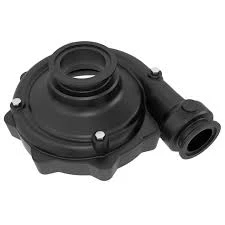Mobile:+86-311-808-126-83
Email:info@ydcastings.com
German
Aluminium Sand Casting - Precision Manufacturing Solutions
Aluminium Sand Casting An Overview
Aluminium sand casting is a widely used manufacturing process that involves pouring molten aluminium into a sand mold to create complex shapes and components. This method is highly favored in various industries due to its cost-effectiveness, versatility, and ability to produce intricate designs with high dimensional accuracy.
The Sand Casting Process
The aluminium sand casting process begins with the creation of a mold. Molds are typically made from a mixture of sand, clay, and water, which provides the necessary binding properties. Two halves of the mold are created, and the pattern, which is a replica of the final product, is placed in one half of the mold to create a cavity. The two halves are then assembled, and molten aluminium is poured into the mold through a pouring basin and sprue.
Once the metal cools and solidifies, the mold is broken away to reveal the cast part. Sand molds can be reused multiple times, but they may require maintenance and repair after several uses. Depending on the complexity of the part, additional finishing processes like machining, polishing, or coating may be necessary to achieve the desired surface finish and tolerances.
Advantages of Aluminium Sand Casting
One of the primary benefits of aluminium sand casting is its adaptability. This process can accommodate a variety of shapes and sizes, making it suitable for small to medium production runs. The ability to produce complex geometries and internal cavities often eliminates the need for additional machinery or fabrication processes, saving time and cost.
aluminium sand casting

Furthermore, aluminium has excellent casting properties. It has a low melting point compared to other metals, which reduces energy consumption during the melting and pouring processes. The metal's fluidity allows it to fill intricate patterns, resulting in a smooth surface finish that often requires less post-casting work.
Another significant advantage of using aluminium is its lightweight nature combined with high strength. These characteristics make products made from aluminium sand casting ideal for applications in automotive, aerospace, marine, and consumer goods industries. Manufacturers can create lighter parts that contribute to overall efficiency and performance.
Environmental Considerations
In recent years, the foundry industry has made strides toward sustainability. Aluminium sand casting is often seen as an environmentally friendly option because aluminium can be recycled indefinitely without losing its properties. Utilizing recycled aluminium not only reduces the demand for new raw materials but also lowers energy consumption in the casting process.
The sand used in the casting process can also be recycled, further contributing to a reduction in waste. Foundries are continually exploring innovative ways to minimize their environmental footprint while maximizing efficiency.
Conclusion
Aluminium sand casting stands out as a crucial manufacturing technique in today's industrial landscape. With its ability to produce lightweight, high-strength components, it plays a significant role in various sectors. The process's adaptability, cost-effectiveness, and environmental benefits make it a preferred choice for many manufacturers. As technology continues to advance, the future of aluminium sand casting holds even greater promise, potentially leading to enhanced production processes and sustainability in the industry.











